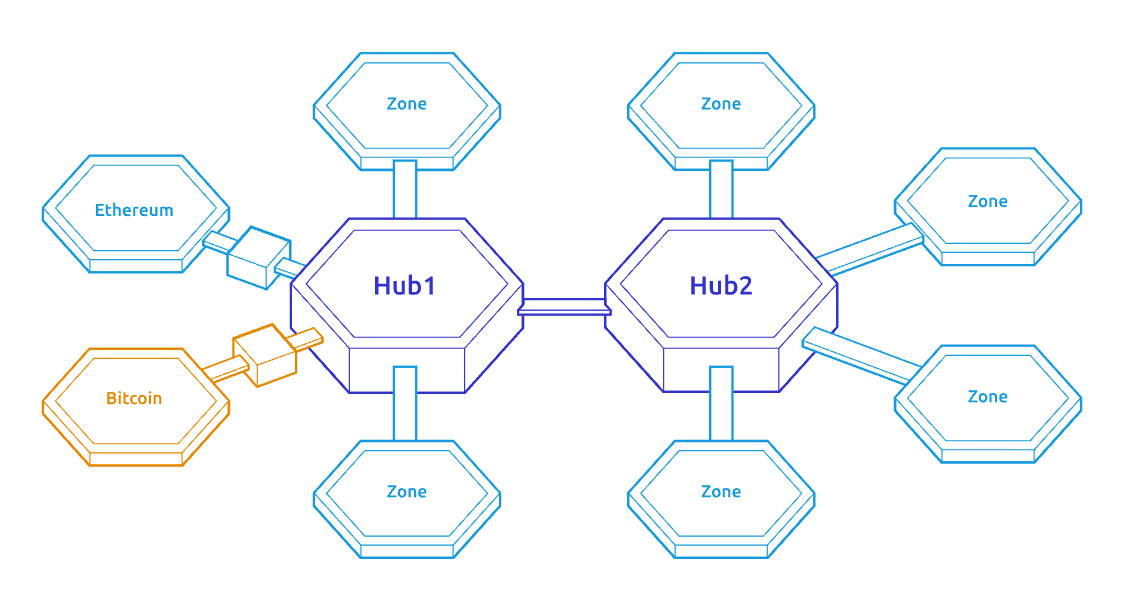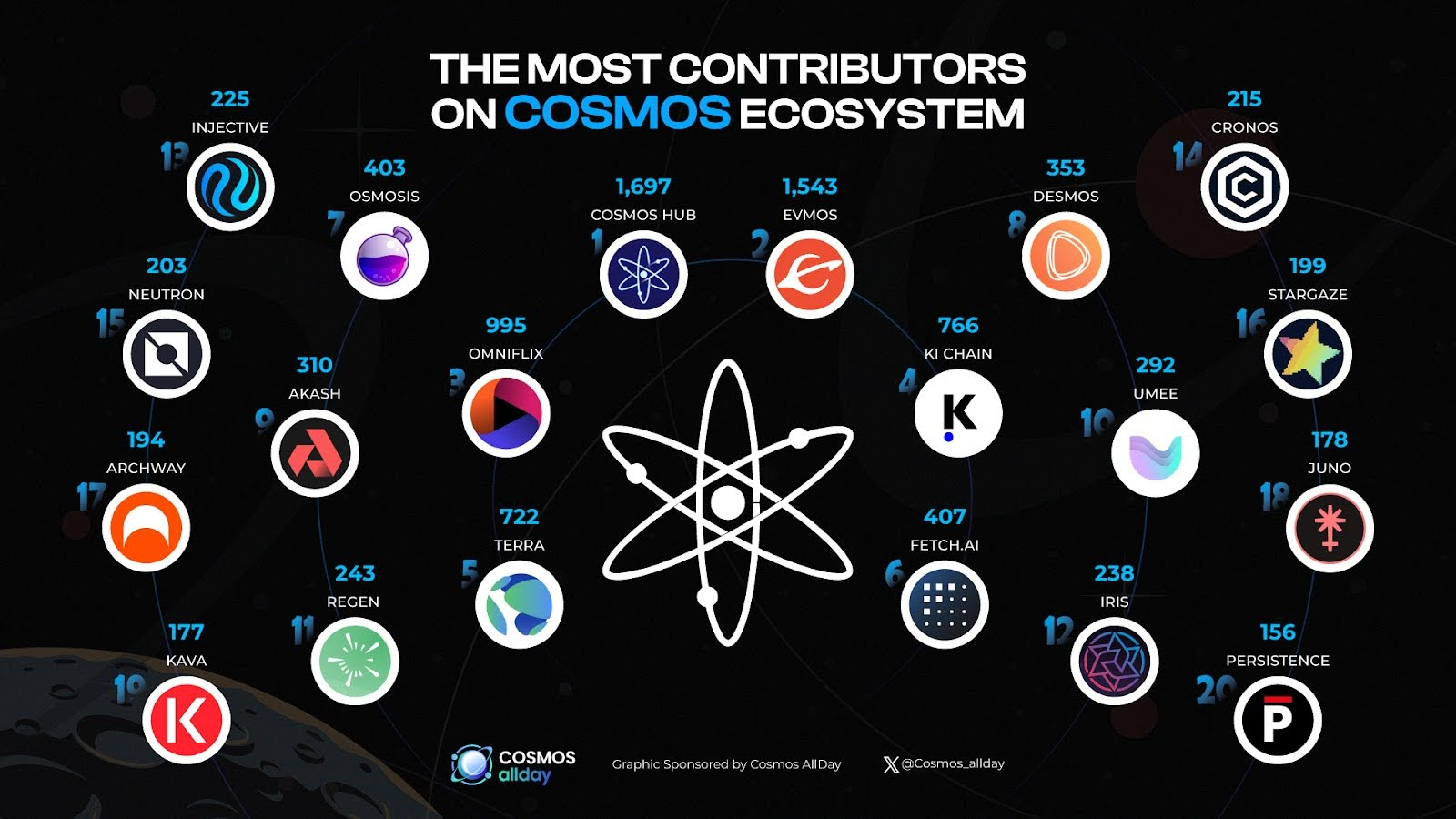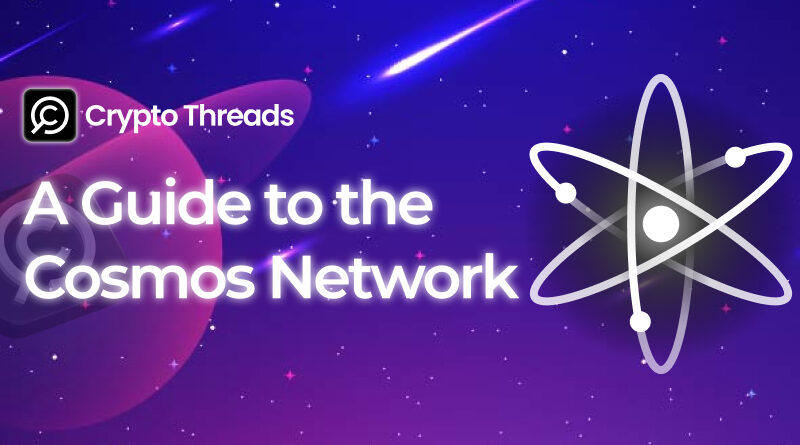A Guide to the Cosmos Network and Its Ecosystem
What Is Cosmos?
Each of the autonomous blockchains that make up Cosmos’ decentralized architecture uses Byzantine Fault Tolerance (BFT) consensus methods.
Cosmos can be summed up as an interoperable, scalable blockchain ecosystem. Previously, different blockchain architectures, programming languages, and consensus protocols presented major obstacles for developers trying to enable communication between them. Cosmos arose as a means of facilitating smooth, decentralized communication between chains.
The interconnected network of blockchains powered by Cosmos’ native coin, $ATOM, is built for scalability and interoperability.

The Cosmos Hub (Source:coin98.net)
Core Concepts Behind the Cosmos Network
Replicating a deterministic state machine across nodes, a blockchain preserves consensus as long as less than one-third of its operators are compromised.
To break this down, a program that may alter its state in response to inputs is represented by a state machine. The balance of tokens in an account, for instance, could be the state after transactions have been made.
A blockchain is deterministic because identical inputs always yield the same outcome when starting from the same genesis state.
Consensus integrity is maintained when at least two-thirds of the validating nodes are honest and synchronized.
Blockchains have three primary layers:
Bitcoin was the first blockchain, but it was tightly coupled across these three layers, making it difficult for developers to build decentralized applications (dApps). Ethereum addressed this in 2014 with its Ethereum Virtual Machine (EVM), enabling smart contract deployment
Key Features of Cosmos
As the “Internet of Blockchains,” Cosmos aims to preserve sovereignty while enabling data sharing, increased throughput, and seamless networking. Technologies such as the Application Blockchain Interface (ABCI), which works with tendermint’s BFT to accelerate blockchain development, are used to achieve this goal. Tendermint’s BFT eliminates the need to design the entire stack from scratch by combining the Network and Consensus layers into a single tool, allowing developers to focus on creating the Application layer. Tendermint and applications communicate via ABCI, a protocol that supports any programming language for greater adaptability.
Tendermint BFT offers several key features. It supports both public and private blockchains by handling networking and consensus while leaving validator selection to the Application layer. Its high performance allows for block times as low as one second and processing thousands of transactions per second. Additionally, it provides instant finality, where transactions are confirmed as soon as a block is created. On the security front, Tendermint BFT is fault tolerant and includes mechanisms to detect and hold malicious actors accountable during forks.
The Cosmos SDK is a modular framework designed to simplify the creation of secure blockchain applications. It emphasizes modularity by allowing developers to reuse existing modules or create custom modules to suit their specific needs. Furthermore, it enforces capability-based security to establish clear boundaries between modules, prevent unwanted interactions, and ensure reliability and safety.
The protocol known as Inter-Blockchain Communication (IBC) is essential for promoting interoperability between blockchains. By facilitating smooth communication and data sharing between blockchains with disparate validator sets and applications, it promotes a highly interconnected and cooperative blockchain environment.
Cosmos Ecosystem
Additionally, hubs are custom blockchains that act as the primary link between several Zones. By facilitating communication and interoperability between Zones, they ensure efficient transfer of assets and data across the network.

The most contributors on Cosmos ecosystem (Source: Cosmos allday)
The Cosmos Hub is the most notable and original Hub in the Cosmos ecosystem. It operates as a public Proof-of-Stake (PoS) blockchain that accepts a variety of tokens for gas fee payment. As such, it is a fundamental component of the network, facilitating connectivity between its many Zones.
Key projects within the Cosmos ecosystem include:
The Hidden Network: With an emphasis on data privacy, Secret Network performs safe but secret calculations using encrypted smart contracts, or Secret Contracts. It opens up new opportunities for sensitive applications like gaming and healthcare by supporting privacy-centric DeFi, NFTs, and more.



